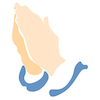After considerable planning over several years, a Call for Artists was published and distributed in December 2010 for The Buffalo Hunt outdoor public artwork. In February 2011, an independent jury recommended a proposal by Cochrane artists Don and Shirley Begg and, subsequently, the Society signed a commission agreement with the artists. The commission was unveiled in a ceremony on Saturday, September 10 in the park area at the corner of Sir Winston Churchill Avenue and Green Grove Drive – the former site of the St. Albert cenotaph. At over two metres tall, the bronze and concrete artwork is imposing and is a significant addition to the City’s cultural scene.
The St. Albert Historical Society is currently developing the park area around the sculpture. This development will include a concrete plaza around the artwork, benches, a storyboard, lighting and landscaping. Park development will begin in 2013 and is expected to extend over several years.
The Buffalo Hunt was commissioned to honour St. Albert’s first settlers – the Métis. The Métis were not only the first setters but also were the only residents of the Settlement for nearly two decades. Although familiar with and adept at agriculture, the Métis kept in touch with their aboriginal roots by adapting the buffalo hunt to their needs. Indeed, until the 1880’s, the survival of the Settlement depended on both agriculture and the semi-annual hunts. The artwork memorializes this significant activity in the life of the St. Albert community.
The following excerpts from The Black Robe’s Vision (p.p. 27-30, 61) highlight the importance of the buffalo hunt to the early community.
“To the majority of freemen on the plains, including those settled in St. Albert, the primary source of livelihood remained the buffalo hunt….
To the majority of the Métis, the buffalo was the quintessential product of trade and sustenance. Buffalo meat was a staple food, while the hides of the animal were used for clothing, shelter and as an item of trade with the Hudson’s Bay Company….
More than just an economic and practical means of livelihood, the buffalo hunt was a way of life to the Métis. Through the hunt, the social and political structure of the Métis society was determined and the consciousness of a separate national identity maintained…(the hunt was) a strictly organized and regulated affair…. To take optimum advantage of the massive herds of buffalo and to provide protection from enemies whose paths they might cross during the hunt, it was deemed advisable for large groups of Métis to pursue the buffalo together. To facilitate efficiency and productivity, a rigid system of conduct and tactics was developed and codified.
…a captain or president of the hunt was elected on the basis of physical prowess and hunting skills, as proven in previous hunting and military expeditions. As well, the laws governing the upcoming hunt were formulated and agreed upon…. Families taking part in the hunt would have an average of six carts….
The scene of the kill was one of rapid, but calculated movement on the part of the hunters, as each was free to pursue and kill as many animals as he was able. On horseback, the men darted quickly among the buffalo, shooting and reloading their guns on the run…. In a gesture of benevolence, hunters donated a certain number of their kill to the families of widows or incapacitated hunters….
Then…the women took over the enormous task of cleaning and preparing the hides and processing the meat…. long strips of meat were cut and hung to dry over elevated poles, above fires. Finally, the hides were scraped, folded and loaded onto the carts.
To the Métis, the lifestyles and traditions associated with the buffalo hunt symbolized the features of the good life. The qualities which defined a good hunter were the traits to which Métis men aspired in life….
For the Métis of St. Albert, the buffalo hunt was an absolute necessity during the early years of the Mission’s formation….
…during the 1860’s ominous signs emerged for the buffalo hunt….
…in both 1877 and 1878, the hunts failed…. The last mention of the buffalo in the daily journals of the St. Albert Mission was in 1881….”Don and Shirley Begg are renowned sculptors and have received commissions from across Canada. Not only sculptors, Don and Shirley operate their own foundry and cast all their own works in Cochrane, Alberta, ensuring the utmost in quality control. A most notable work is the ‘fallen four’ memorial in Mayerthorpe, Alberta. Don and Shirley operate their business as Studio West Ltd and also do bronze casting for other artists.


